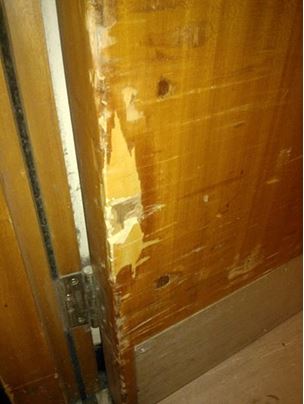

It is vital that fire doors are installed and maintained as fit for purpose.
Let’s examine the legal obligations that building, estates and facilities managers as well as installation and maintenance contractors are under as well as how to make sure fire doors are correctly maintained while avoiding costly mistakes and unnecessary expense.
Fire Doors and the law
Any person, company or organisation that owns, manages or operates buildings must comply with the Regulatory Reform (Fire Safety) Order 2005. This means that the ‘Responsible Person’ must ensure that a suitable and sufficient fire risk assessment has been carried out and that this includes fire doors and escape doors.
Article 17 of the order includes the duty to engage ‘Competent Persons’ (as referenced in Article 18) as necessary to assist with fire safety measures which of-course includes fire doors.
Furthermore, under clause 5.3 and 5.4 anyone procuring or responsible for installing a fire safety system must ensure that those installing it are up to the job. We have seen many successful prosecutions for failing to meet these requirements, but now attention is turning to those who procure and install.
So if they are to comply with fire safety law, what important issues should housing providers and the contractors be aware of?
What, why and how
Fire doors are an essential part of a building’s passive fire safety strategy. In a fire they provide compartmentation to prevent fire and smoke spread, assisting in safe evacuation and providing protection to the rest of the building.
Essentially, they help to keep fire in the part of the building where it started and help check its development.
Fire doors are tested and rated for fire separation performance in terms of the time elapsed before the ultimate failure of the door and the most common ratings as referenced in UK Building Regulations are FD30 and FD60 (although higher rated doors such as FD90 and FD120 are available for use where additional protection is required).
The important issue here is to understand how specification, installation and any alterations such as glazing may impact on the doors’ fire performance.
Let’s start with procurement. The fire door manufacturer will have had the fire door performance tested at a laboratory, together with suitable door hardware, glazing and seals, and an assessment will have been made providing details about the type of configuration for which the door may be used and the type of door hardware (locks, latches, hinges and door closers etc.) that may be fitted.
Think of a fire door as an engineered fire safety device that must be installed on-site to replicate what was tested in the fire performance test or you can’t be sure that the door will provide the required level of protection.
These days most fire doors and hardware components will have actual fire test evidence and also belong to certification schemes so the supplier will be able to provide the certificates, instructions and assurances you need.
Take time to study these and you will see that there are limitations to the trimming of door edges and to sizes and types of door hardware and seals that may be fitted. You should also insist on buying products whose manufacturers can back up stated claims with actual performance documentation.
Beware of claims such as ‘complies with…’ Insist instead on evidence that products have achieved the required ratings in the fire performance test.
Using this information will enable you to not only carry out correct installation but to provide the necessary information required for the operation and maintenance manuals.
One particular area where heeding manufacturer’s instructions is essential is where glazed vision panels are required.
Many fire doors these days must have any apertures cut and the glazing system fitted only at the manufacturers own factory or by a licensed door processor. On-site cutting of apertures and glazing is not permitted and will invalidate the fire performance certification.
Existing doors
Of course in many buildings you will be dealing with existing doors rather than new and it will be necessary to inspect and maintain them to ensure they are fit for purpose. This is where it is important that the maintenance team or the contractor has the necessary competence.
With existing doors there may be no product certification and maintenance instructions so how can you be sure the repair work you do is correct and that the doors are fit for purpose?
The answer is to make sure that the work is carried out or overseen by qualified people who have fire door qualifications and credentials. Qualified fire door inspectors, repairers and maintainers will be aware of the British and European standards relating to fire doors and their installation as well as publications and best practice guidelines.
Fire Door Inspection Scheme (FDIS) Certificated Fire Door Inspectors are reporting that they still see recently installed fire doors that are not compliant with these standards and regulations and the infographic shown here outlines the most common problems they have spotted.
A competent repair will not compromise the fire separation properties of the door so often seen ‘repairs’ such as holes and voids covered with push plates and signs are clearly not acceptable! Suitable fire rated components must always be used and sufficient intumescent protection must be maintained.
Sometimes it’s not possible to repair a fire door because damage to its integrity is so severe or the fire performance certification may limit scope for repairs and alterations.
The door’s fire performance data sheet must be consulted before attempting repairs otherwise this certification may be void.
Fire safety legislation makes it clear that fire doors are installed and maintained as fit for purpose and BS9999 gives guidance about inspections and how often they should be made so it’s an area where you cannot afford to take chances.
Only by appointing competent people, whether they are in-house maintenance staff or outside contractors, can you be sure that any inspection, repair and maintenance works are carried out correctly and legally.
Of course appointing a competent person will have a cost but they will be able to identify the exact work required avoiding unnecessary costs going forward. And using a qualified fire door inspector will help you avoid non-compliant and sometime unnecessary work carried out by some contractors.
There are many useful resources to help you comply available through FDIS, BWF-Certifire and the Guild of Architectural Ironmongers (GAI). FDIS also provides online learning education modules leading to a diploma and independent assessment that can enable you to become certificated as a fire door inspector.
And because it’s online and available through smartphones and tablets too, it can be worked through whenever and wherever it suits you.
Developed by industry experts and delivered by the BWF-CERTIFIRE Scheme and the Guild of Architectural Ironmongers (GAI), FDIS was Europe’s first qualification specifically aimed at transforming people’s knowledge about fire doors. It currently has over 600 people registered.
Find this article useful? The author – Neil Ashdown – will deliver a presentation about ‘The Critical Role of Fire Doors in Saving Lives and Protecting Property – Helping Building Operators meet their Legal and Social Obligations’ at FIREX International 2015
2023 Fire Safety eBook – Grab your free copy!
Download the Fire Safety in 2023 eBook, keeping you up to date with the biggest news and prosecution stories from around the industry. Chapters include important updates such as the Fire Safety (England) Regulations 2022 and an overview of the new British Standard for the digital management of fire safety information.
Plus, we explore the growing risks of lithium-ion battery fires and hear from experts in disability evacuation and social housing.
